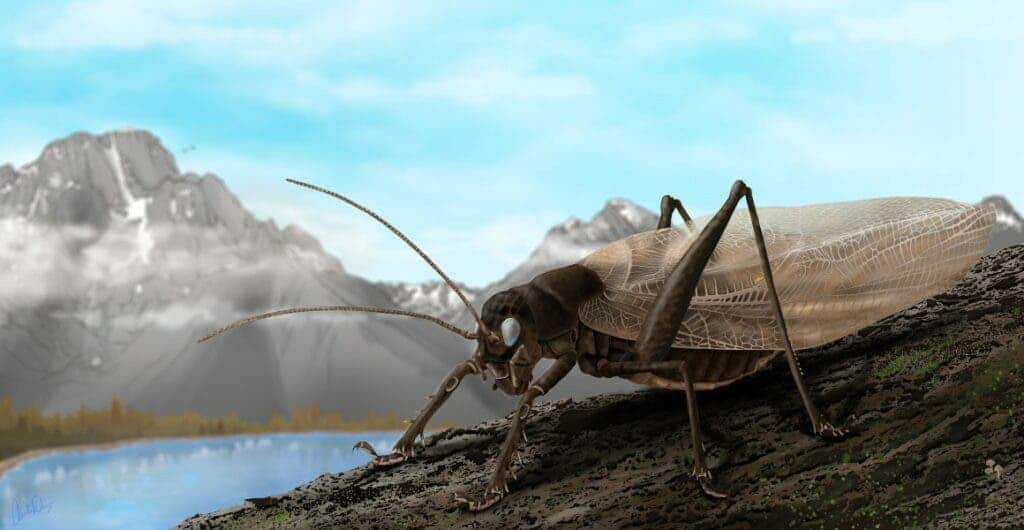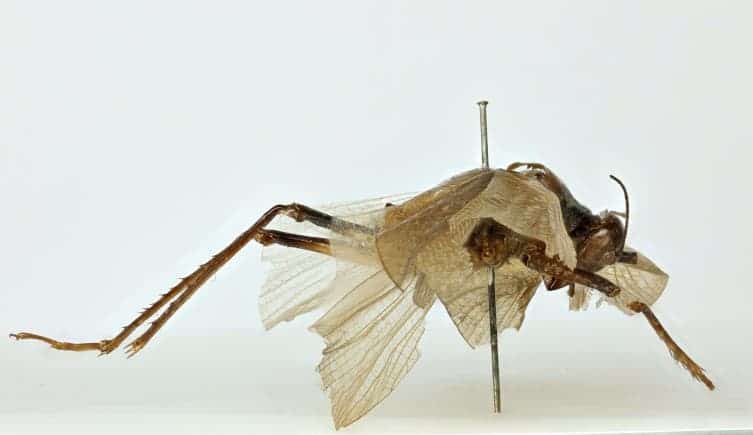
Although tiny, some of the noisiest inhabitants of Earth are, in fact, insects. Whether it’s the hum of a bee, the buzz of a fly, or the chirping of a cricket, there’s really no escaping their constant, noisy chatter. Humans are so used to these sounds that most of the time we just ignore them, but here’s an interesting thought: did they always sound like this?
Insects first appeared around the same time as the earliest land plants around 480 million years ago. In no time, they came to dominate the planet. Even today, it is estimated that around 75% of the over 8 million different species of life on Earth are insects, most of which remain to be discovered.
Some of the noisiest insects are thought to belong to an ancient family called Prophalangopsidae, which scientists know about from fossils from the Jurassic period. They’re related to modern crickets and katydids, but there are only eight modern descendants that we know of.
One of them is Prophalangopsis obscura, an insect first described in 1869 by British naturalist Francis Walker. That was also the last time anyone has seen it, despite biologists’ best efforts to track it down. Many still have hope they’ll find one in India, its supposed habitat.

For more than 150 years, this lonely specimen has been sitting in the collection of the Natural History Museum in London. Now, scientists have made P. obscura sing again, digitally recreating its long-lost call in the hopes that it could be used to finally locate the insect in the wild.
“While we’re only dealing with one specimen, it’s one of just a handful of species which survives from a group of grasshopper and cricket relatives that likely dominated during the Jurassic,” said co-author Ed Baker, a bioacoustics researcher at the Natural History Museum in London.
Like crickets, locusts, and grasshoppers, P. obscura more than likely produces songs using a process known as stridulation, or the rubbing together of body parts such as the wings and legs to make sounds. The researchers generated 3D models of each of the lonely insect’s wings and determined their resonant frequency, which they used to recreate the tune of its song based on a library of insect recordings from hundreds of species.
Here’s what it sounds like (spoiler alert: it’s pretty crickety).
The resulting song has a low pitch — and that’s a pretty important hint concerning its environment. Insects with these song frequencies tend to live in cold areas, which are avoided by bats, a major insect predator. In light of this, northern India and Tibet could be the most suitable location for these insects to live in and the first places biologists should look for them in their quest to rediscover this long-lost species. For instance, recording equipment could be set up in various promising locations which would listen for a match.
“Comparing this species to modern relatives is interesting because it has large wings, which suggest it is capable of long flight, and sings a low-pitched song which travels over long distances. Along with its habit of living out in the open, these features should make it an ideal target for bats as it is easier to detect,” Baker said. “Its survival since the Jurassic suggests that it currently lives in an environment without bats that feed on free-flying insects.”
The new study appeared in the journal PLOS ONE.


